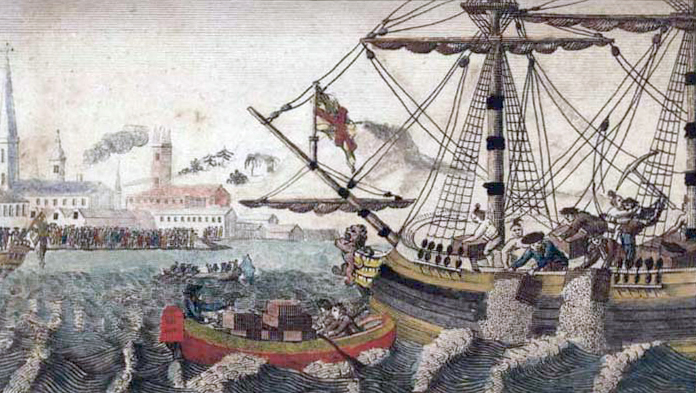| << Chapter < Page | Chapter >> Page > |
Domhoff’s research helped to popularize the concept of the power elite. His theories describe the members of the power elite maintaining their position by collectively following the same social patterns, such as vacationing at a handful of destinations, joining elite clubs, and attending select schools. He also pointed out that the existence of a power elite stands in contrast to an important American ideal: that all Americans have a voice in their government. Domhoff acknowledges that all Americans can potentially exert political influence, but he asserts that our current social and political systems make it easier for the wealthiest citizens to shape policy.

Even before there were modern nation-states, political conflicts arose among competing societies or factions of people. Vikings attacked continental European tribes in search of loot, and, later, European explorers landed on foreign shores to claim the resources of indigenous groups. Conflicts also arose among competing groups within individual sovereignties, as evidenced by the bloody French Revolution. Nearly all conflicts in the past and present, however, are spurred by basic desires: the drive to protect or gain territory and wealth, and the need to preserve liberty and autonomy.
According to sociologist and philosopher Karl Marx, such conflicts are necessary, albeit ugly, steps toward a more egalitarian society. Marx saw a historical pattern in which revolutionaries toppled elite power structures, after which wealth and authority were more evenly dispersed among the population, and the overall social order advances. In this pattern of change through conflict, people tend to gain greater personal freedom and economic stability (1848).
Modern-day life is not without a multitude of political conflicts: discontents in Egypt overthrow dictator Hosni Mubarak, disenchanted American Tea Partiers call for government realignment, and Occupy Wall Street protesters decry corporate greed. Indeed, the study of any given conflict offers a window of insight into the social structure of its surrounding culture, as well as insight into the larger human condition
Many current American conflicts are concentrated internally. The United States the government, for instance, has almost shut down because Republicans and Democrats could not agree on budget issues. This conflict continues to be at the center of American politics. Similarly, over the last few years the philosophical differences between the Democratic and Republican parties have remained on the forefront. Frustration with the traditional two-party system helped to spawn the formation of the Tea Party, a grassroots movement with a strong conservative and libertarian bent.

Other sociologists study government and power by relying on the framework of symbolic interactionism, which is grounded in the works of Max Weber and George H. Mead.
Symbolic interactionism, as it pertains to government, focuses its attention on figures, emblems, or individuals that represent power and authority. Many diverse entities in larger society can be considered symbolic: trees, doves, wedding rings. Images that represent the power and authority of the United States include the White House, the eagle, and the American flag. The Seal of the President of the United States, along with the office in general incites respect and reverence in many Americans.
Symbolic interactionists are not interested in large structures such as the government. As micro-sociologists, they are more interested in the face-to-face aspects of politics. In reality, much of politics consists of face-to-face backroom meetings and lobbyist efforts. What the public often sees is the front porch of politics that is sanitized by the media through gatekeeping.
Symbolic interactionists are most interested in the interaction between these small groups who make decisions, or in the case of some recent congressional committees, demonstrate the inability to make any decisions at all. The heart of politics is the result of interaction between individuals and small groups over periods of time. These meetings produce new meanings and perspectives that individuals use to make sure there are future interactions.
Sociologists use frameworks to gain perspective on data and observations related to the study of power and government. Durkheim’s functionalism suggests that societal power and structure is predicated on cooperation, interdependence, and shared goals or values. Conflict theory, rooted in Marxism, asserts that societal structures are the result of social groups competing for wealth and influence. Symbolic interactionism examines a smaller realm of sociological interest: the individual’s perception of symbols of power and their subsequent reaction to the face-to-face interactions of the political realm.
What is one criticism of functionalism?
Explain what is meant by the term power elite . Consider its original intention as coined by C. Wright Mills as well as your understanding of it your current everyday world.
Functionalism is a complex philosophical theory that pertains to a variety of disciplines beyond sociology. Visit the entry devoted to this intriguing topic on Stanford University’s Stanford Encyclopedia of Philosophy for a more comprehensive overview: (External Link)
The Tea Party is among the most high-profile grassroots organizations active in American politics today. What is its official platform? Examine the Tea Party website to find out more information at (External Link)
Domhoff, G. William. 2011. “Who Rules America?” Sociology Department at University of California, Santa Cruz. Retrieved January 23, 2012 ( (External Link) ).
Marx, Karl. 1848. Manifesto of the Communist Party . Retrieved January 09, 2012 ( (External Link) ).

Notification Switch
Would you like to follow the 'Introduction to sociology' conversation and receive update notifications?